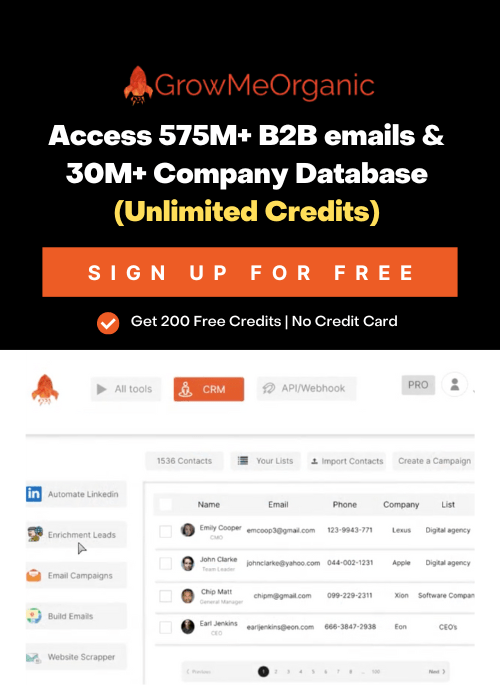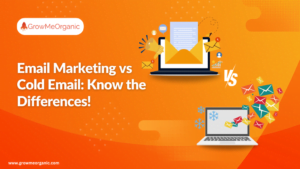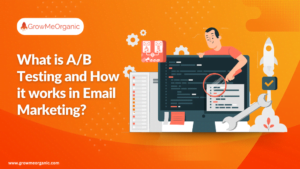In the digital age, email has become a central hub in our daily lives. It’s a way for us to stay in touch with the people we care about and also a platform for brands to reach their customers.
But not all emails are created equal. Some are better than others at grabbing attention, sparking curiosity, and ultimately driving action. One of the most effective types of email is storytelling-flavored marketing email because it connects with recipients on an emotional level.
There’s a lot that goes into ensuring that your emails get opened. In this article, we’ll share some tips on the best ways to improve your open rates with Storytelling In Emails.
What is storytelling?
Content creation can take many forms; it can range from whitepapers with thousands of words to pay-per-click ads with just a couple of sentences.
Both can be used to tell a story. Email marketing usually falls somewhere between long-form content and simple ads that are designed to be concise. It should come as no surprise that storytelling can be effective.
Storytelling captivates the human mind. It is an age-old technique, which does not only make marketing emails more effective but has been proven to help people remember new information. Marketers can use stories to make their emails stand out by creating new content that engages the reader’s interest.
When you use storytelling in your email, you include everything-the design, the content, and even the call to action. Choosing storytelling over being promotional or using standard email options has a few benefits.
The importance of Storytelling In Emails
With nearly any marketing tactic, you can tell a story. So, why should email marketers be interested in storytelling? Well, it’s a great way to talk about your brand and promote your products and services.
Storytelling captivates the human mind. It is an age-old technique, which does not only make marketing emails more effective, but it has been proven to help people remember new information. Marketers can use stories to make their emails stand out by creating new content that engages the reader’s interest.
Storytelling can increase a product’s value by up to 20 times. Storytelling also has another important benefit when it comes to ROI. If it can increase a message’s impact and value, it can also increase the effectiveness of a campaign.
If you surprise your users by dropping smart stories into their inbox, you can set yourself up for success. Users prefer to get news and offers from email.
How to use storytelling in email marketing?
Email marketing is the new startup. It’s inherently social, mobile, and it bypasses all of the barriers to conversion – meaning that it can be one of your most effective tools for generating revenue. To put this into perspective, email marketing earns businesses $40 billion each year.
In our experience, a good story-based email includes the following six elements: Include a curiosity-driven subject line, Capture attention in the subject line, Tell a story, Transition into your call-to-action, Close with a call-to-action, and, include a funny visual element.
Include a curiosity-driven subject line
A great subject line varies from business to business, but one type of subject line seems to work particularly well when sent via email: When your curiosity is piqued, your brain becomes more motivated to learn.
For instance- “Choose the best service that caters to the needs of every industry”.
While the subject line doesn’t reveal much about the email’s content, it teases enough to be captivating.
Capture attention in the subject line
Following the opening of your email comes the next challenge:
You need to hook the reader with your story. The first sentence should grab the attention of the users.
A great first sentence in an email always sets the tone for the entire story.
It is one of the things you should do in your newsletter, to give readers a glimpse into your life so they get to know you better.
As a result, you can better engage our audience and build a relationship.
For instance,-
Hi Adam,
Last week we went to Australia and had a hassle-free journey. Yay!
Tell your audience about yourself and who you are without being afraid to do so. By doing so, your emails will become more credible and authentic.
In addition, do not give too much away in the first sentence. Be sure to capture the reader’s attention and persuade them to keep reading.
Next, tell your story.
Tell a story
It is different to tell a story in an email than in a blog post, for example.
Because space is limited, you have to write a story that’s long enough to explain the essentials, but short enough to keep the reader’s attention.
It’s not always easy to accomplish that, but it is certainly possible. The first thing you should do before writing emails is to decide what your call-to-action will be. This will build your story that ties the story to the CTA.
For instance-
So, relate to the stories from your life that are relevant to your CTA.
Transition into your call-to-action
The next step is to make a transition into your CTA. In this try to link your story to the CTA.
In the above example, the survey displays the topic of the free report. You can add a link when you first mention your keyword in the content. This will give readers a chance to click through.
Close with a call-to-action
Always write a clear CTA, your readers will click through. Tell the readers about the expectation when they click. You can repeat CTA at least twice and this will convince readers who are on the fence about clicking through.
Include a funny visual element or gif videos
This last step is to include a relevant visual element. Include personal images and GIFs.
GIFs do not mean to create high-quality gif videos. They just need to be fun and personal to accompany your stories. So you can create your GIFs depending upon the story.
About Post Author
Anant Gupta
Growth Hacker, Marketing Automation Enthusiast & Founder of GrowMeOrganic









![Mailifier Review: Email Validator Checker Tool! [Lifetime Deal]](https://www.growmeorganic.com/wp-content/uploads/2024/07/mailifier-review-300x169.png)
